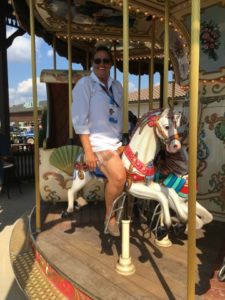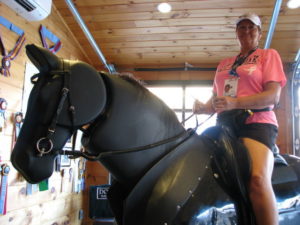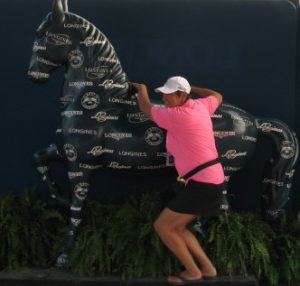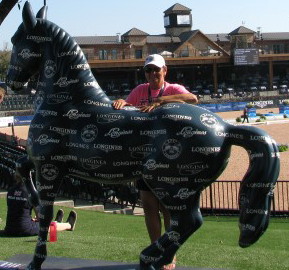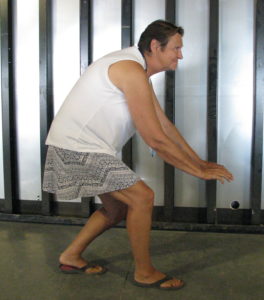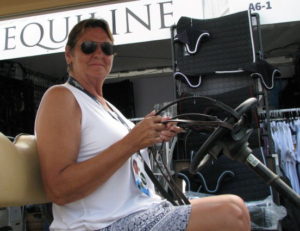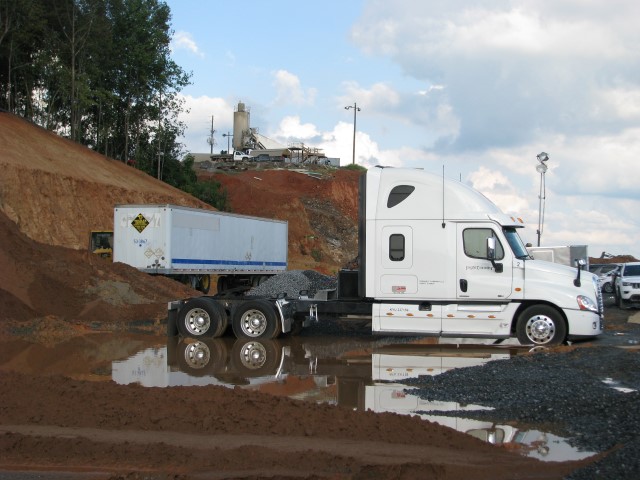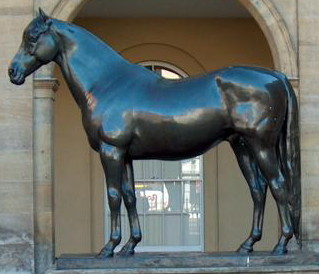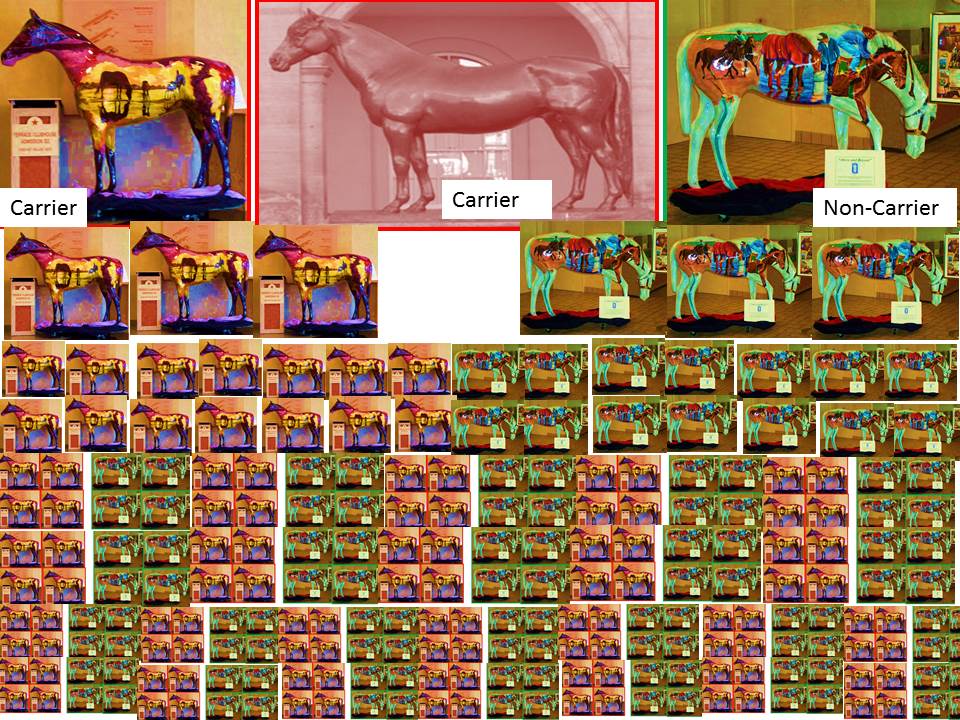Now that I am across the mountains in Tennessee so that Florence doesn’t affect me nearly as much, I will share my WEG tidbits to date.
Travel and Parking
First of all, I planned this trip based on information sent out to the media, which clearly stated that our accreditation would be available as of Friday, Sept. 7th from 8 to 8 daily.
I left Manitoba (14 hours east of where I live in Alberta) – after giving a talk at the racetrack as well as doing some private evaluations – with this date in mind. I drove for 3 days with the trailer in tow to arrive on the afternoon of the 7th. I was then told that media credentials would not be available until Monday. The email announcing the change arrived on the 6th at about 4:30 p.m. local time, while I was actually driving. It stated in part:
“Dear Accredited Media,
Your media accreditation will be available to pick up from the Accreditation Center on September 10th from 8am.
Also good news for those of you driving! We have managed to secure closer parking for all media…”
Good news for those of you driving??? Hard to tell the author of the email is from the UK and has little concept of what a road trip really is. Her whole country would only fill up about a third of my province.
When I was informed that I would be issued parking passes a month or more ago, I informed this same person that my vehicle was oversized and takes the equivalent of two pull-through stalls and asked for advice. I received no response.
However, I was given a number to call re my parking situation once I had accreditation and passes in hand on Sept. 10th. After trying (perhaps in vain) to convince the person I called that I was not complaining, just asking where I should park, she took my number and informed me that she would call me by noon the next day. Want to guess whether that ever happened? Fortunately someone with some sense had overheard my conversation and called the site’s security and asked where I could park. I was put in an entirely suitable lot, where horse trailers were stored and the employees parked. Problem solved…or so I thought.
I parked in the proper lot and as directed by the person at the entrance on Tuesday and was promptly sewn in. Wednesday’s revision was to park in the lower level of this lot. OK. But, people had parked along the roadway to and from the lower level and threading a trailer through that gauntlet was a challenge. Plus, the vehicles that had me sewn in on the lower level (Yes, it happened again.) did not move until 11:30 p.m. I was forgiving in this case as the outside (non-venue) security/parking folks had been called away to aid efforts along the NC coast. Totally predictable that members of the public took advantage and parked wherever they wanted.
That night, another Tryon security person told me to park on the upper level behind the track-hoe (my original spot) and mark off enough room so I could get out. This was done with yellow rope attached to the track-hoe and the front of my truck. True, no one parked directly in front of my truck, but, apparently the driver of a BMW SUV thought it a good idea to park in front of the rope. Same result. I was not able to leave. I went back to the media venue and snooped about. Somewhere in this time span, someone thought they should shut off my propane tank so that the fridge was not working in the hot, humid weather. I suspect a certain SUV driver. Eventually (8:00 p.m.) I was able to leave, go top up the fuel and drive back to the lot, where I parked on the lower level next to a horse trailer and spent the night.
I left the Tryon facilities Friday afternoon and arrived safely on the western side of the mountains without encountering too much wind and only the odd rain shower.
Now I am going to see what I can rig up to make the valve on the propane tank tamper-proof. And I will shop for the parts at the Walmart that has been kind enough to let me overnight here.
The Venue
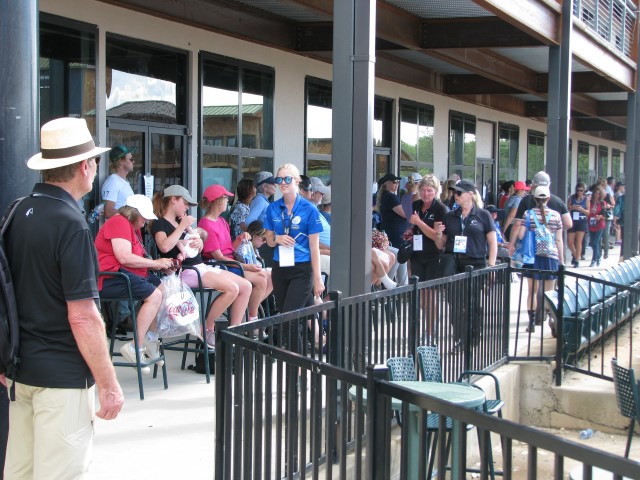 (Photo: People will park anywhere they like. The ones seated in this photo simply removed the chairs from below and parked themselves in the pedestrian corridor. Inconveniencing others is of no concern.)
(Photo: People will park anywhere they like. The ones seated in this photo simply removed the chairs from below and parked themselves in the pedestrian corridor. Inconveniencing others is of no concern.)
When they get it finished – yes, it is still under construction – the facility will be marvelous!
Riders from several nations and in various arena-based disciplines said that everything regarding the horses was excellent: footing, stabling, etc. One rider added that the grooms’ housing was dodgy, but was quickly remedied.
However, all areas of new or recent construction are soggy as the local base is made of red clay, which enlarges one’s footprints (sticks to your footwear) and turns to soup. I think the ground in the general area was nearing a saturation point before Florence was a real threat, because of the wet summer.
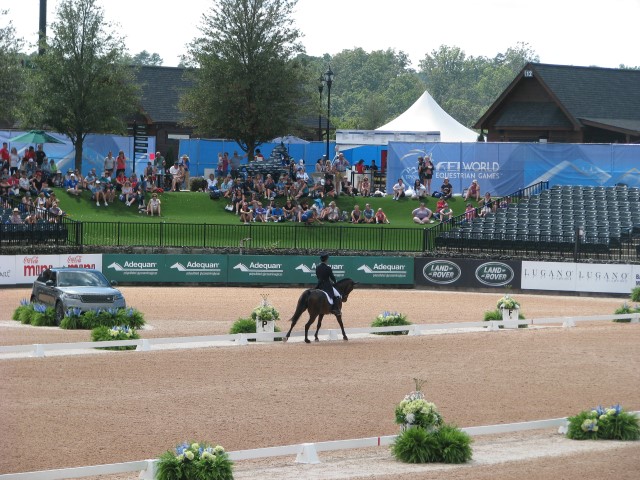
Naturally, rain, wind and potential mudslides factored into my decision to head west.
I do feel sorry for the vendors, who will have a tough time keeping their tents and signage in place and their products dry.
Endurance Debacle
What? Some – not all – of the riders were sent out on the wrong loop at the start? How does that happen? All were called back and the race was restarted at a shorter distance. Still not fair for all as some riders took advantage of the opportunity to walk the distances others had covered at racing pace.
In the end…or rather, the un-end, the race was cancelled. The official FEI statement included, “The remainder of today’s Endurance competition has been cancelled due to a potentially dangerously high combination of heat and humidity, and the conditions out on the trail following heavy rain this afternoon. The decision to cancel, which is in accordance with FEI General Regulations, Article 109.12 was unanimous between the President of the Ground Jury, Technical Delegate and President of the Veterinary Commission, and the Organising Committee.”
I encountered an exasperated horseman from Guatemala in the parking lot. “We shipped the horse all the way here and now it is cancelled,” he said. Of course, heat and humidity would be normal conditions for him and his horse.
There was some scuttlebutt that the sponsor, Meydan (“the visionary concept of His Highness Sheikh Mohammed Bin Rashid Al Maktoum, UAE Vice President, Prime Minister and Ruler of Dubai,” as stated on their website.), had used some influence since the horses from the desert would most likely react poorly to the humidity.
That was a possibility in my thoughts until I happened to sit across from one of the working vets at lunch. He practices in Scotland, so likely had no vested interested in the outcome except as it related to horse welfare. He told me that there were a lot of horses having issues, mostly metabolic in nature, and that several had been brought to the clinic for fluids. “Recoverable?” I asked. “Mostly.” He said. As it turned out, one horse died.
The Oldies
The title of this section refers to horses only. No comment on the humans.
After the press conference that followed the dressage team medals, I spoke to Debbie McDonald about a few things, including the fate of Brentina (1991). I was thrilled when she said the old gal was still doing well in retirement, even though Debbie said the mare has some of the visual signs of aging. She is turned out during the day and in a stall at night. Unfortunately the two embryo transfers that produced Brentina foals, fell under Murphy’s Law to some degree and Debbie called a halt to the process. “She didn’t need to go through all that palpating and stuff.”
And after the eventing dressage, I spoke to Hawley Bennett-Awad and her mother about Hank (Livingstone), a 1990 model, who is now retired from riding and living a life of leisure in California. “He looks great, all dappled. He’s still got good muscle tone. He gets turned out with the young ones and plays with them,” says Hawley.
My Projects
My intent was to show the ranges of motion most common among certain disciplines. I have casual walk pictures (sequential) of most of the dressage horses, quite a few endurance horses most of the eventers and some of the reining horses. I intend to add the jumpers and driving horses next week.
The reining group was a bit problematic. I went to the horse inspection (FEI jog), but was unaware that they had moved up the start time. Nice.
I was not seeking the same photos as the professional photographers, so I positioned myself to take the sequential photos from the side. Unfortunately, the only side visible to me was not the side with the horse’s number on the bridle or halter and I was not allowed access to the opposite side. I asked for a copy of the order of go, so I could try to identify the horses I had photographed. That did not happen even though I went through proper channels. I decided that I was not going to stress about anything and wrote the people at reining and thanked them for lightening my workload at WEG. Because I could not ID the horses I had photographed, and could not do any advance pedigree research, I simply would not be covering their sport. Sigh, smile and suddenly no stress. (I believe their individual final is going on as I type this.)
One of the articles that I intend to write for Warmbloods Today will incorporate the battle of the sexes (riders and horses) in Dressage, Eventing and Jumping. I’ll do some pedigree research as well and note any new trends for publication or for posting here. I may also include my Range-of-Motion piece for my regular column in the above publication. Towards that end: time for some more research.
Breaking News
The dressage freestyle will not be rescheduled. It has been cancelled due to weather and logistics. Fortunately, the Olympic qualifications were based on the team results on Thursday.
Part 2 to follow after I return to Tryon.

